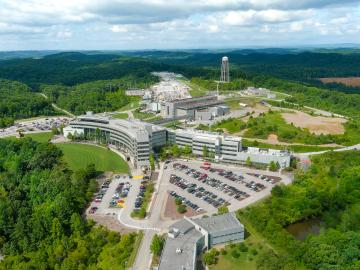Filter Results
Related Organization
- Biological and Environmental Systems Science Directorate (23)
- Computing and Computational Sciences Directorate (35)
- Energy Science and Technology Directorate (217)
- Fusion and Fission Energy and Science Directorate
(21)
- Information Technology Services Directorate (2)
- Isotope Science and Enrichment Directorate (6)
- National Security Sciences Directorate (17)
- Physical Sciences Directorate (128)
- User Facilities (27)
- (-) Neutron Sciences Directorate (11)
Researcher
- Venugopal K Varma
- Andrzej Nycz
- Chris Masuo
- Luke Meyer
- Mahabir Bhandari
- William Carter
- Adam Aaron
- Alexander I Kolesnikov
- Alexei P Sokolov
- Alex Walters
- Bekki Mills
- Bruce Hannan
- Callie Goetz
- Charles D Ottinger
- Christopher Hobbs
- Dave Willis
- Eddie Lopez Honorato
- Fred List III
- Govindarajan Muralidharan
- John Wenzel
- Joshua Vaughan
- Keith Carver
- Keju An
- Loren L Funk
- Luke Chapman
- Mark Loguillo
- Matthew B Stone
- Matt Kurley III
- Peter Wang
- Polad Shikhaliev
- Richard Howard
- Rodney D Hunt
- Rose Montgomery
- Ryan Heldt
- Sergey Smolentsev
- Shannon M Mahurin
- Sydney Murray III
- Tao Hong
- Theodore Visscher
- Thomas Butcher
- Thomas R Muth
- Tomonori Saito
- Tyler Gerczak
- Vasilis Tzoganis
- Vasiliy Morozov
- Victor Fanelli
- Vladislav N Sedov
- Yacouba Diawara
- Yun Liu

We presented a novel apparatus and method for laser beam position detection and pointing stabilization using analog position-sensitive diodes (PSDs).

A pressure burst feature has been designed and demonstrated for relieving potentially hazardous excess pressure within irradiation capsules used in the ORNL High Flux Isotope Reactor (HFIR).

ORNL has developed a large area thermal neutron detector based on 6LiF/ZnS(Ag) scintillator coupled with wavelength shifting fibers. The detector uses resistive charge divider-based position encoding.

Sintering additives to improve densification and microstructure control of UN provides a facile approach to producing high quality nuclear fuels.

Neutron scattering experiments cover a large temperature range in which experimenters want to test their samples.

Fusion reactors need efficient systems to create tritium fuel and handle intense heat and radiation. Traditional liquid metal systems face challenges like high pressure losses and material breakdown in strong magnetic fields.

Neutron beams are used around the world to study materials for various purposes.

The traditional window installation process involves many steps. These are becoming even more complex with newer construction requirements such as installation of windows over exterior continuous insulation walls.

